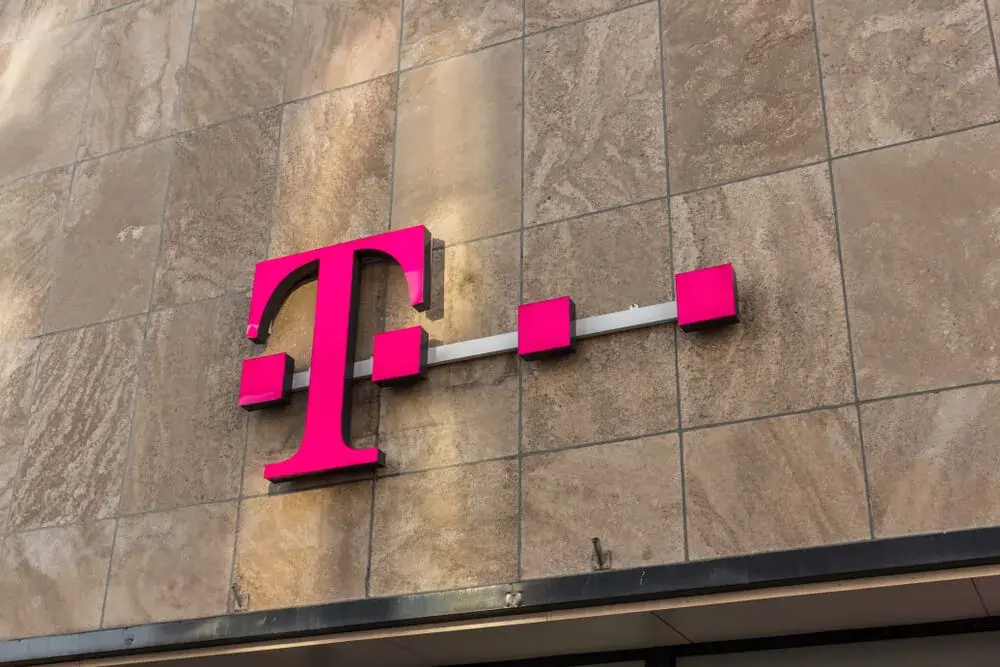The Red Dot Award jury’s statement hails Deutsche Telekom for creating a simple, puristic brand that has been consistently reinvented and developed. It manages to remain relevant for all ages, always ready to meet the zeitgeist while remaining true to itself. The “Brand of the Year 2019” award is further proof of the strategic success of the formerly nationalized telco provider Telekom. From a number 4 ranking behind Vodafone, Orange and Telecom Italia in 2008, Deutsche Telekom is now the most valuable European telecommunication brand. How did they do it? And what are the highlights of Telekom’s marketing strategy?
After its privatization in 1995 and the subsequent IPO, Deutsche Telekom initially positioned itself as a rapidly expanding technology brand. Numerous restructurings, outsourcing, and reintegration led to a fragmented and rather confusing brand image. In 2008, the experienced marketer Hans-Christian Schwingen was brought on board to simplify the brand landscape. Under his leadership, Deutsche Telekom has shifted its image from technology brand to experience brand over the years.
Climbing to the top of European telco brands: Deutsche Telekom
Success has proven Hans-Christian Schwingen right. Within ten and some years, the magenta-colored brand world of Deutsche Telekom was simplified and emotionalized. It rose from being number 4 to become Europe’s most valuable telco brand – ahead of Vodafone, Orange, and Telecom Italia. Schwingen was named “CMO of the Year 2016”, followed by a nomination for Global Marketer of the Year 2018. Taking home the international Red Dot Award for “Brand of the Year 2019” was another milestone on his successful course. In April 2020, Hans-Christian Schwingen will hand over the branding helm to his successor Ulrich Klenke, with the brand in top condition. Here are four of the most important chapters in the Telekom success story.
1. Life is for sharing: Telekom family brand
Magenta, or light purple, became Deutsche Telekom’s color of choice in 1995 and has become one of the brand’s most recognized features. The color not only is ubiquitous at trade fairs and in creative subjects. Under the name Magenta, Telekom acts as a TV provider but also is neighboring Austria’s second-largest mobile network. The magenta color code was registered exclusively for Deutsche Telekom and is fiercely protected against infringements by other companies. And with good reason, as the color magenta is now anchored in many heads under “Telekom”, being recognized even without an accompanying logo. For example, Telekom runs Lovemagenta.com, a merchandise shop in which the famous “T” logo is hardly present. The vast majority of products – some produced with well-known partners such as Adidas – can only be identified as Telekom products by their magenta color, making it a prime example of subtle brand communication.
3. #Dabei campaign: Digitalization for all
Telekom see their mission as being a brand that is relevant to everyone. The #Dabei campaign, launched in 2019, is designed to emphasize their claim. All stops are pulled out both on classic and social media channels, mixing atmospheric image spots with hip music and powerful testimonials as well as promotions. The overall message: everyone should be able to enjoy fast internet and its advantages. To make this possible anywhere and anytime, billions are being invested in network expansion, digital inclusion offers at local level are supported – and of course, special flat rates or free Magenta TV are offered. #Dabei is not a short-term campaign but is set to accompany the public for at least one to two years, all in the spirit of long-term brand management.
4. Gaming for good: Social marketing with Sea Hero Quest
While the subjects maneuvered through island and iceberg labyrinths, data about their gaming behavior was collected and forwarded for scientific evaluation. Thus, the harmless pastime provided valuable data about what kind of gaming behaviors could be linked back to certain Alzheimer’s risk groups. The result was not only a win for Alzheimer’s research but also strengthened Telekom’s position as a socially forward-thinking company. One that goes beyond a strong brand, worthy of a Red Dot Award.
Deutsche Telekom: MARMIND® Top Tips
Think long term – successful brand management is a marathon, not a sprint.
Remain human – especially when it comes to technical products, ask yourself: What does it bring to people?
Set higher goals – not only deliver a product but social added value.
This article is based on the following sources:
https://www.turi2.de/allgemein/schwingen/
https://www.red-dot.org/project/deutsche-telekom-40665
https://www.telekom.com/en/media/media-information/archive/telekom-launches-dabei-campaign-564808


